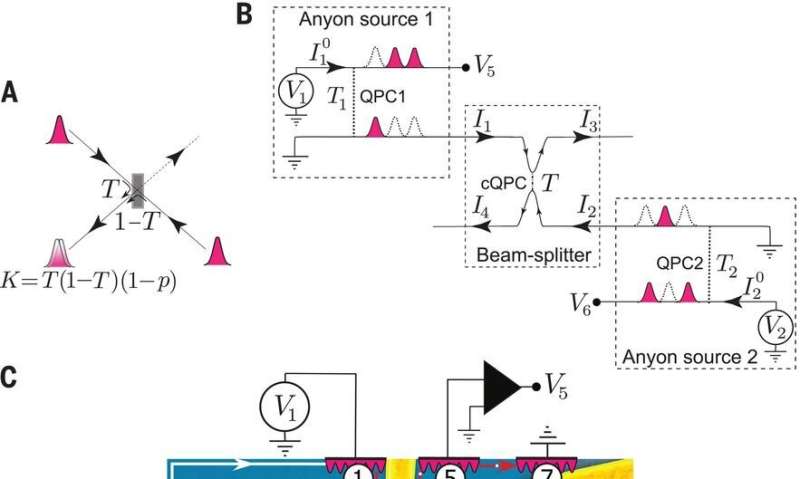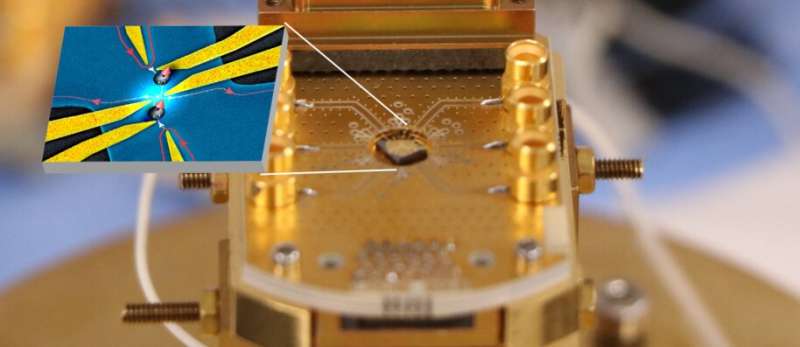Sample and principle of the experiment. (A) Exclusion quasiprobability p: The probability K to have two anyons exiting in the same output edge channel is modified by the factor (1 – p). (B) Principle of the experiment: The voltage V generates the currents I0 toward QPC1 and QPC2. These two QPCs, tuned in the weak-backscattering regime T1, T2. Credit: ≪ 1, act as random Poissonian sources of anyons that collide on cQPC. (C) False-colored scanning electron microscope (SEM) image of the sample. The electron gas is shown in blue and the gates in gold. Edge currents are shown as red lines (red dashed lines after partitioning).Science (2020). DOI: 10.1126/science.aaz5601
A team of researchers from Sorbonne Université, CNRS and Ecole Normale Supérieure has reported observational evidence of a quasiparticle called an anyon. In their paper published in the journal Science, the team describes the tiny anyon collider they built in the lab their results. Dmitri Feldman, with Brown University has published a Perspective piece on the work in the same journal issue.
As Feldman notes, the standard model of particle physics theorizes that there are two kinds of elementary particles—bosons and fermions. But as he also notes, the standard model describes physics in three dimensions with particles at their highest energy levels. That leaves some wiggle room for the existence of other types of quasiparticles that exist only in two dimensions. One such proposed 2-D quasiparticle is the anyon—it is not a fermion or a boson. And theory has suggested that its charge can be less than that of an electron, which makes them the smallest proposed charged quasiparticle. And they behave differently than either fermions or bosons in one particular way. Fermions avoid each other and bosons can form groups—anyons, in contrast, have been predicted to interact somewhere in between attracting and repelling. And it was this feature that lay at the heart of the work done by the team in France.
The work involved creating a very tiny 2-D anyon collider—so small they had to use an electron microscope to observe the action inside of it. The collider consisted of a 2-D plane set between another layered material. More specifically, the collider held a quantum Hall liquid that was kept inside of a strong magnetic field. Electric charges were directed along source tunnels to quantum point contacts. Anyon streams were directed in a manner that forced them to collide in the middle of the collider and then exit along one of two designated paths. In such a device, fermions would leave the collider via separate paths, while bosons would leave as clumps. The researchers observed evidence of minor clumping—less than would be seen with bosons, but consistent with what theory has suggested would happen with anyons.
One of the samples used in the experiment. Credit: Dr Manohar Kumar
More information: H. Bartolomei et al. Fractional statistics in anyon collisions, Science (2020). DOI: 10.1126/science.aaz5601
Journal information: Science
© 2020 Science X Network

























